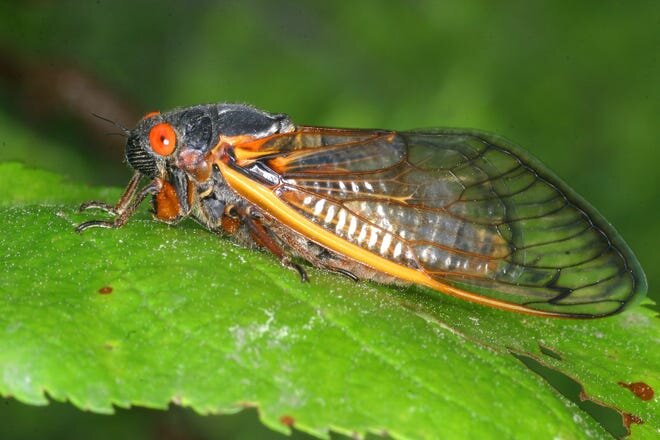7:15 AM | *Could be a noisy spring in the Mid-Atlantic region with the emergence of the Brood X cicadas after 17 years...recipe included for chocolate-covered cicadas*
Paul Dorian
Overview
It has been 17 years since the last Brood X cicada emergence took place in the Mid-Atlantic region and they are about to make a noisy return. Unlike the greenish annual cicadas, periodical cicadas in northern states are known for their massive takeovers every 17 years and they are also known for their bold red eyes. It’s been since 2004 that the Brood X variety emerged to the surface and this emergence comes on a massive scale which is a simple evolutionary tactic. By coming out in the millions, cicadas overwhelm any predators and ensure the very survival of the species.
Details
The Brood X periodical cicada could emerge by the millions this spring in 15 states including the Mid-Atlantic region and that could be the millions per acre depending on land use in the given region over the past 17 years. There are two species of periodical cicadas — the 17-year cicadas, found in northern states, and the 13-year cicadas, found in the South. The 2021 Brood X emergence is expected to take place sometime during the month of May – give or take a few weeks - and depending on soil temperatures. Specifically, when soil temperatures reach 64 degrees (F), mature cicadas will tunnel their way up to the soil surface and emerge. Interestingly, the bugs will actually postpone their emergence for a day or two if the weather is rainy or otherwise uncooperative. No one really knows exactly what mechanism they use to trigger their mass emergence.
Once emerged, the cicadas will crawl onto whatever nearby structures they can find including trees, posts, and perhaps even onto the side of your home. After settling in, they will shed their skin and transform into winged adults. And, of course, part of this whole process includes the constant loud humming sound, like very large and angry crickets ready for battle and difficult to drown out. The collective buzzing noise can actually reach up to 100 decibels and it is produced by males who are up in trees and trying to attract a female. About a week after emerging from their shells as full adults, the cicadas will mate and they are in a bit of a rush since they don’t have very long to live after that – perhaps three or four weeks. Females will lay their eggs in big groups on ends of tree branches, up to 600 over their short lifetime. The eggs will hatch about six weeks later and immediately drop to the ground. The young ones will then burrow into the soil about 18 inches deep to feed on the sap of the tree roots for the next 17 years.
Aside from being loud, the cicadas shouldn’t do any major damage. They are not drawn indoors and they do not bite. They can cause some cosmetic damage to trees, but protection of well-established and healthy trees is really not necessary. However, smaller and younger trees and shrubs can be protected for this couple of months period by covering them with plastic mesh. And if you have new foliage to plant, consider waiting until after this couple of months has passed which in reality probably pushes new planting to the fall season considering the hot and not so favorable weather conditions of the summer.
Finally, if you’re so inclined, cicadas can make a low-fat, high-protein snack. Dried cicadas provide a crunch with a nutty, earthy taste, according to those who've tried it. In their softer form, before their exoskeletons harden, others say the cicadas are “shrimp-like”. A group at the University of Maryland even published a periodical cicada cookbook titled Cicada-licious, featuring recipes for dishes such as Cicada Dumplings, Emergence Cookies and El Chirper tacos. Here is an example recipe:
Chocolate-Covered Cicadas
Source: "CICADA-LICIOUS: Cooking and Enjoying Periodical Cicadas"
Ingredients:
8 squares of good-quality dark, white, or milk chocolate
30 dry roasted cicadas
Directions:
1. Roast cicadas for 15 minutes at 225°F.
2. Melt chocolate in a double-boiler over low heat. Dip insects in chocolate, place on wax paper and refrigerate until hardened.
Enjoy…and get ready for a noisy spring.
Meteorologist Paul Dorian
Perspecta, Inc.
perspectaweather.com




